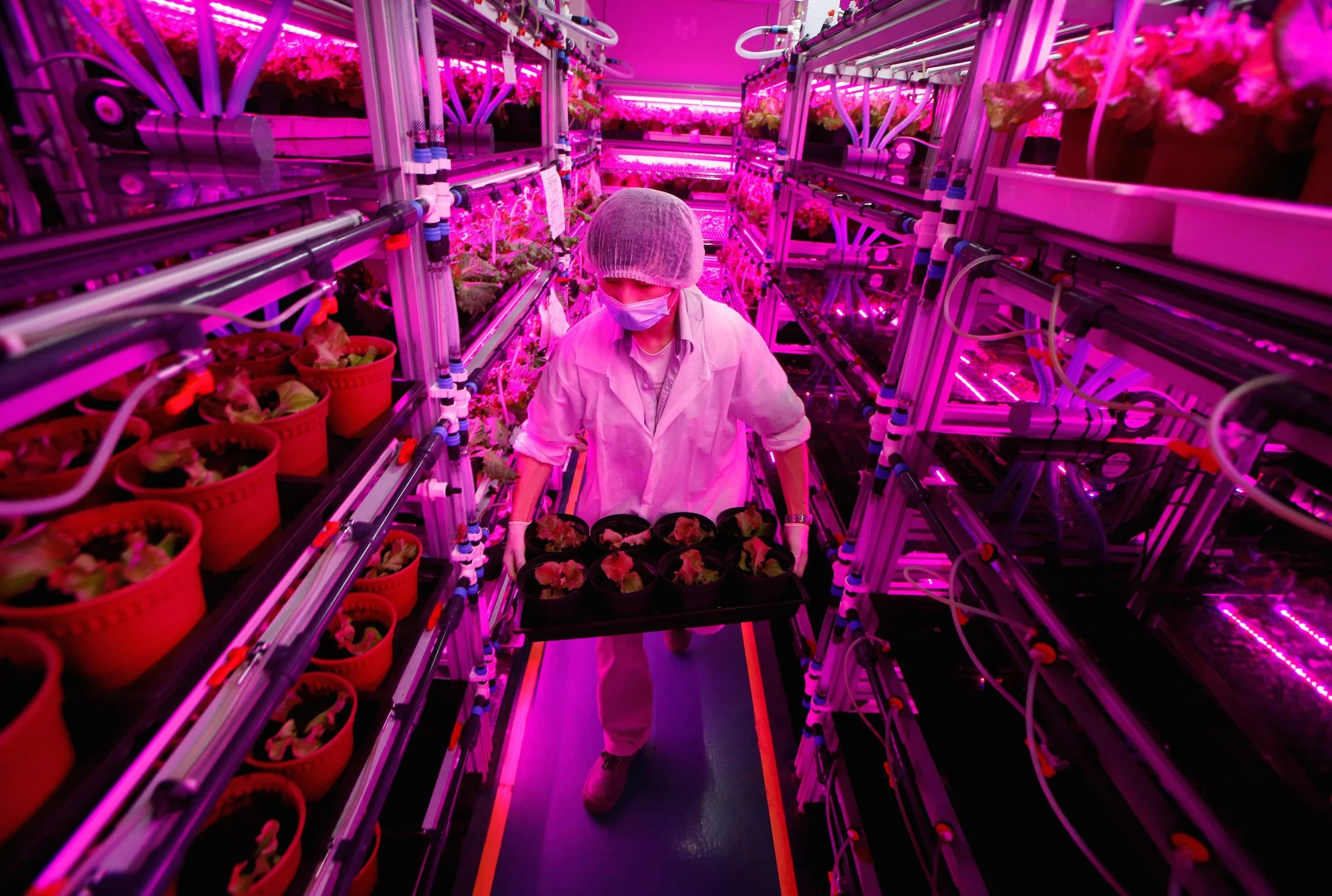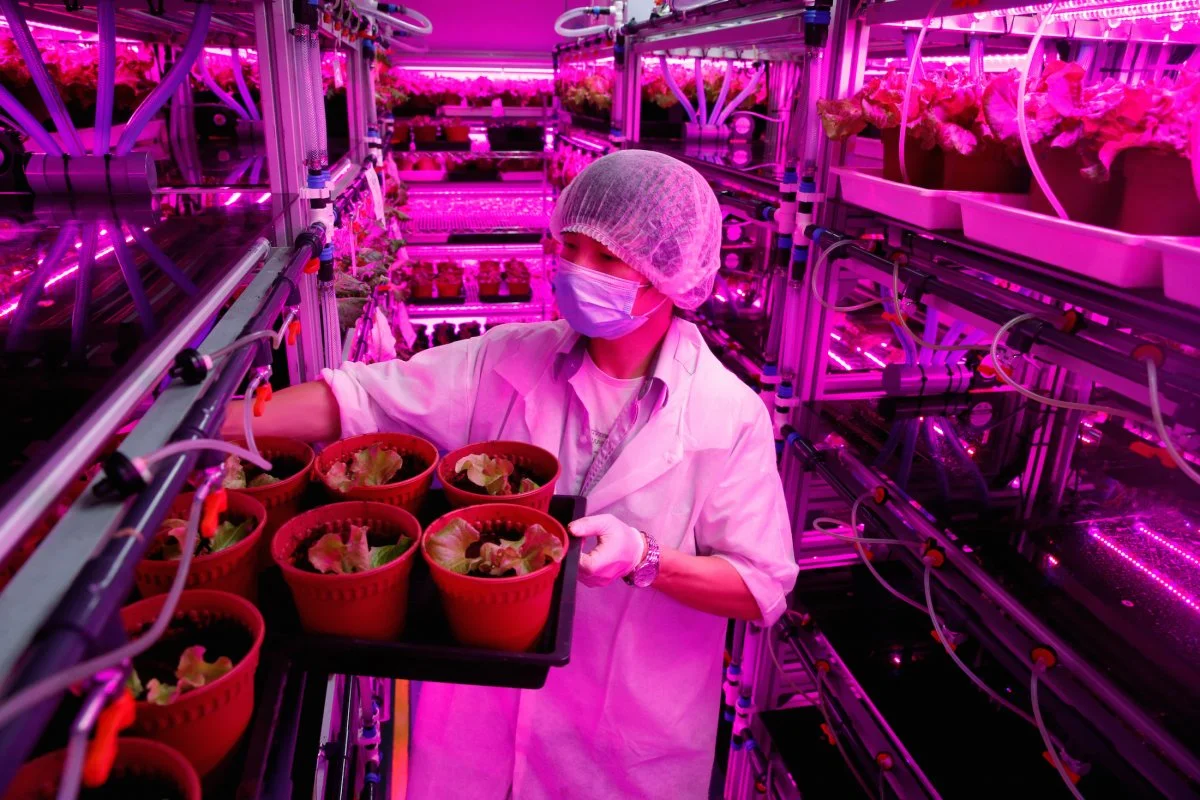Panasonic's First Indoor Farm Can Grow Over 80 Tons of Greens Per Year — Take a Look Inside
Panasonic's First Indoor Farm Can Grow Over 80 Tons of Greens Per Year — Take a Look Inside
A worker handles crops inside Panasonic's first and only vegetable farm in Singapore.Reuters/Edgar Su
Panasonic may be known for its consumer electronics, but the Japanese company is also venturing into indoor agriculture.
In 2014, Panasonic started growing leafy greens inside a warehouse in Singapore and selling them to local grocers and restaurants. At the time, the 2,670-square-foot farm produced just 3.6 tons of produce per year. The farm's square footage and output have both more than quadrupled since then, Alfred Tham, the assistant general manager of Panasonic's Agriculture Business Division, tells Business Insider.
Panasonic's greens are all grown indoors year-round, with LEDs replacing sunlight. The growing beds are stacked to the ceiling in order to achieve a higher yield in the limited space.
Take a look inside.
Panasonic's vegetable farm resides in an inconspicuous warehouse in Singapore.
Reuters/Edgar Su
The farm's 20 workers put on hairnets, face masks, gloves, and hazmat suits before handling the produce to make sure they don't contaminate it.
Reuters/Edgar Su
The farm potentially produces 81 tons of greens per year at full capacity — 0.015% of all produce grown in Singapore. The hopes to eventually raise that percentage to 5%.
Reuters/Edgar Su | Source: Ag Funder News
There are currently 40 types of crops in the warehouse, including mini red radish, mini white radish, rocket lettuce, mizuna, Swiss chard, romaine lettuce, and rainbow chard.
Reuters/Edgar Su
To plant the greens, Panasonic's workers place tiny seeds on growing beds. Unlike many vertical farms, Panasonic's grows its greens in soil.
Reuters/Edgar Su
Everything grows under LEDs instead of sunlight. The lights come from a local company and waste less energy than typical light bulbs.
Reuters/Edgar Su
Panasonic's farm likely still has high energy costs, however, since the LEDs are on 24-7. Even the best LEDs have only a 50% efficiency rate, meaning half the electricity is turned to heat, not light, The New York Times reports.
The LEDs shine at a specific frequency that encourages the plants to grow quickly. The farmers also control the warehouse's climate, including its humidity and temperature.
Edgar Su/Reuters
Once the seeds begin to sprout, the farmers transfer the plants to small pots.
Reuters/Edgar Su
Small nozzles feed nutrient-rich water to the crops.
Reuters/Edgar Su
The farm's goal is to increase the amount of produce grown in Singapore, which imports over 90% of its food. The island nation has a shortage of arable land, so indoor farming could become a viable way to grow more greens, Tham says.
Reuters/Edgar Su | Source: Agri-Food and Veterinary Authority of Singapore
Each 3-ounce bowl of salad greens from the farm sells for about $5 (USD) in Singapore's grocery stores, under the brand Veggie Life. In mid-2014, Panasonic also started selling greens to local restaurants.
Reuters/Edgar Su
Panasonic's indoor agriculture project is part of its Factory Solutions division, which creates industrial machines and systems. Given the division's experience with engineering and manufacturing, Panasonic sees indoor agriculture as a profitable extension of its business, Tham says.
Reuters/Edgar Su
"We foresee this business to be a potential growth portfolio, given the global shortage of arable land, increasing populations, climate change, and demand for high quality and stable food supply," Tham says.
Reuters/Edgar Su















